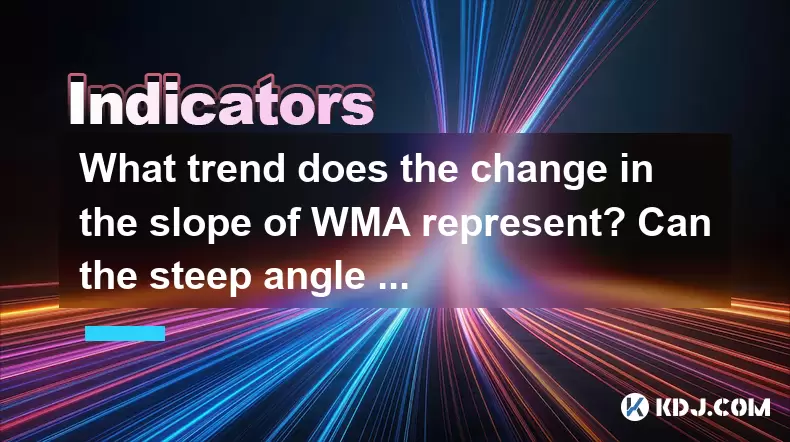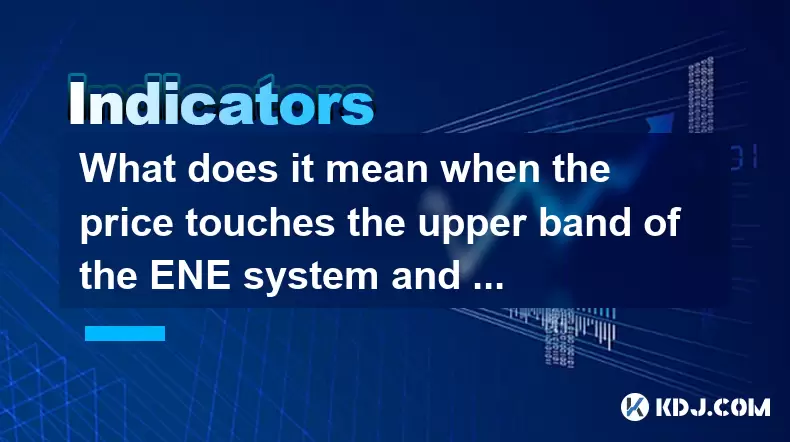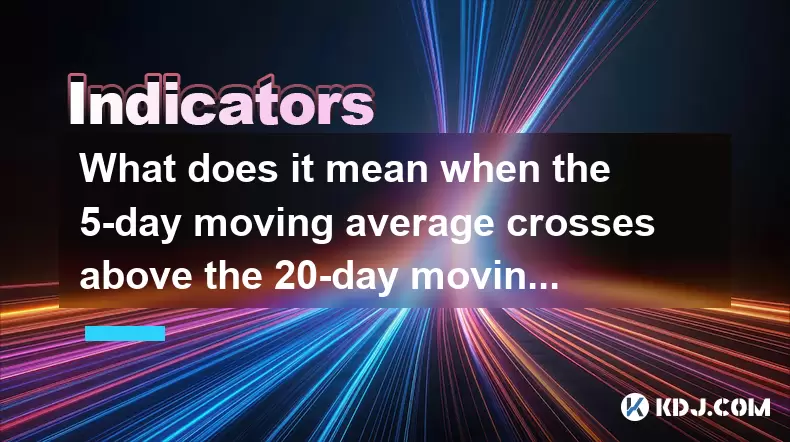-
 Bitcoin
Bitcoin $116700
0.48% -
 Ethereum
Ethereum $4213
6.27% -
 XRP
XRP $3.280
1.22% -
 Tether USDt
Tether USDt $1.000
0.02% -
 BNB
BNB $805.1
2.46% -
 Solana
Solana $180.2
2.65% -
 USDC
USDC $0.0000
0.02% -
 Dogecoin
Dogecoin $0.2412
8.50% -
 TRON
TRON $0.3356
-1.11% -
 Cardano
Cardano $0.8108
3.59% -
 Hyperliquid
Hyperliquid $43.89
8.53% -
 Chainlink
Chainlink $21.15
10.75% -
 Stellar
Stellar $0.4502
1.41% -
 Sui
Sui $3.935
4.69% -
 Bitcoin Cash
Bitcoin Cash $570.7
-1.75% -
 Hedera
Hedera $0.2636
3.28% -
 Avalanche
Avalanche $24.25
4.48% -
 Ethena USDe
Ethena USDe $1.001
0.03% -
 Litecoin
Litecoin $122.0
-0.08% -
 Toncoin
Toncoin $3.445
2.68% -
 UNUS SED LEO
UNUS SED LEO $8.979
-0.08% -
 Shiba Inu
Shiba Inu $0.00001379
6.73% -
 Uniswap
Uniswap $10.91
2.00% -
 Polkadot
Polkadot $4.106
5.39% -
 Dai
Dai $1.000
0.02% -
 Pepe
Pepe $0.00001227
9.07% -
 Bitget Token
Bitget Token $4.507
0.72% -
 Cronos
Cronos $0.1576
3.40% -
 Monero
Monero $272.0
-1.68% -
 Ethena
Ethena $0.7502
21.27%
What trend does the change in the slope of WMA represent? Can the steep angle of the moving average determine the acceleration of the market?
The change in the slope of the WMA is crucial for traders, indicating shifts in market momentum and helping inform strategic trading decisions in the crypto market.
May 27, 2025 at 05:49 pm

The change in the slope of the Weighted Moving Average (WMA) can be a significant indicator for traders and investors within the cryptocurrency market. The WMA is a type of moving average that assigns more weight to recent data points, making it more responsive to new price movements compared to a simple moving average. Understanding the trend that the change in the slope of the WMA represents is crucial for making informed trading decisions.
Understanding the Weighted Moving Average (WMA)
The WMA is calculated by multiplying each data point by a weight factor, which decreases linearly with time. The formula for the WMA is:
[ \text{WMA} = \frac{\sum_{i=1}^{n} w_i \cdot Pi}{\sum{i=1}^{n} w_i} ]
where ( P_i ) is the price at time ( i ), and ( w_i ) is the weight assigned to that price, typically calculated as ( w_i = n - i + 1 ). This method ensures that more recent prices have a greater influence on the average.
Interpreting the Slope of the WMA
The slope of the WMA is a visual representation of the rate at which the moving average is changing. If the WMA is trending upwards, it indicates that the recent prices are higher than the older prices, suggesting a bullish trend. Conversely, a downward sloping WMA suggests a bearish trend, where recent prices are lower than older prices.
Changes in the Slope of the WMA
A change in the slope of the WMA can signify a shift in market momentum. For instance, if the WMA was previously trending upwards and begins to flatten out, it may indicate that the bullish momentum is weakening. Similarly, if the WMA was trending downwards and starts to level off, it could signal that the bearish momentum is fading.
Steep Angle of the WMA and Market Acceleration
The steep angle of the WMA can indeed provide insights into the acceleration of the market. A steep upward slope indicates that the market is accelerating in a bullish direction, with prices rising at a faster rate. On the other hand, a steep downward slope suggests that the market is accelerating bearish, with prices falling more rapidly.
Practical Application of WMA Slope Changes
Traders often use the change in the slope of the WMA to make strategic decisions. For example, if a trader observes a flattening of the WMA after a period of steep ascent, they might interpret this as a signal to take profits or adjust their positions. Similarly, if the WMA slope begins to steepen after a period of flatness, it might be seen as an entry signal for a new trend.
Detailed Steps to Analyze WMA Slope Changes
To analyze the change in the slope of the WMA and determine market acceleration, traders can follow these steps:
- Select the WMA Period: Choose an appropriate period for the WMA. Shorter periods will be more sensitive to price changes, while longer periods will provide a smoother trend line.
- Plot the WMA on a Chart: Use a trading platform or charting software to plot the WMA on a price chart. Ensure that the WMA is clearly visible alongside the price data.
- Observe the Slope: Monitor the angle of the WMA line over time. A steep angle indicates strong momentum, while a flat angle suggests weak momentum.
- Identify Changes in Slope: Look for any changes in the angle of the WMA. A shift from a steep angle to a flatter one, or vice versa, can be a critical signal.
- Confirm with Other Indicators: Use additional technical indicators, such as the Relative Strength Index (RSI) or Moving Average Convergence Divergence (MACD), to confirm the signals provided by the WMA slope changes.
- Make Trading Decisions: Based on the analysis, decide whether to enter, exit, or adjust positions in the market.
Case Study: Bitcoin WMA Slope Analysis
Let's consider a hypothetical case study involving Bitcoin (BTC) to illustrate the practical application of WMA slope changes. Suppose the 20-day WMA for Bitcoin was trending upwards with a steep angle, indicating strong bullish momentum. Over the next few days, the slope begins to flatten, suggesting that the bullish momentum is waning.
- Initial Observation: The steep upward slope of the 20-day WMA indicates a strong bullish trend.
- Change in Slope: The WMA slope starts to flatten, signaling a potential slowdown in the bullish momentum.
- Confirmation: The RSI also begins to move away from overbought territory, confirming the weakening momentum.
- Trading Decision: A trader might decide to take profits or reduce their position size in anticipation of a potential trend reversal.
Importance of Context in WMA Slope Analysis
It's essential to consider the context when analyzing the slope of the WMA. Factors such as market volatility, trading volume, and external news events can all influence the interpretation of WMA slope changes. For instance, a steep WMA slope during a period of high volatility might not be as reliable as one during a more stable market environment.
Limitations of WMA Slope Analysis
While the change in the slope of the WMA can provide valuable insights, it is not without limitations. False signals can occur, especially in choppy or sideways markets. Therefore, it's crucial to use the WMA in conjunction with other technical indicators and fundamental analysis to improve the accuracy of trading decisions.
Frequently Asked Questions
Q: How does the WMA differ from the Simple Moving Average (SMA)?
A: The WMA assigns more weight to recent data points, making it more sensitive to new price movements compared to the SMA, which treats all data points equally. This makes the WMA more responsive to short-term trends.
Q: Can the WMA be used effectively in all market conditions?
A: While the WMA is useful in trending markets, it can produce false signals in choppy or sideways markets. Traders should combine the WMA with other indicators and consider the overall market context to improve its effectiveness.
Q: How can traders adjust the WMA period for different trading strategies?
A: Shorter WMA periods, such as 10 or 20 days, are suitable for short-term trading strategies, providing more frequent signals. Longer periods, such as 50 or 100 days, are better for long-term trend analysis, offering smoother trend lines.
Q: What other technical indicators can be used alongside the WMA for better analysis?
A: Traders often use the WMA in conjunction with indicators like the RSI, MACD, and Bollinger Bands to confirm trends and signals. These additional tools can help validate the signals provided by the WMA slope changes.
Disclaimer:info@kdj.com
The information provided is not trading advice. kdj.com does not assume any responsibility for any investments made based on the information provided in this article. Cryptocurrencies are highly volatile and it is highly recommended that you invest with caution after thorough research!
If you believe that the content used on this website infringes your copyright, please contact us immediately (info@kdj.com) and we will delete it promptly.
- Trump, Crypto Vehicle, and WLFI Tokens: A New York Minute on the Latest Buzz
- 2025-08-10 00:30:12
- Wheat Penny Fortune: Unearthing Valuable Coins in Your Pocket Change
- 2025-08-10 00:35:19
- AI Coin Mania: Dubai Millionaires Eye 20x Gains!
- 2025-08-09 23:10:12
- ChatGPT's Hot Takes: Meme Coins to Buy Now for a Wild 2025!
- 2025-08-09 23:10:12
- Jurassic Park Vibes in Your Pocket: The Colourful Canadian Coin Featuring a Dinosaur Eye
- 2025-08-09 23:50:12
- Altcoins on the Radar: VeChain, Ethereum, and the Shifting Crypto Landscape
- 2025-08-09 23:50:12
Related knowledge

What does it mean when the price is trading above the SAR indicator but the red dots are densely packed?
Aug 09,2025 at 11:49pm
Understanding the SAR Indicator and Its Visual SignalsThe SAR (Parabolic Stop and Reverse) indicator is a technical analysis tool used primarily to de...

What does it mean when the MACD histogram continues to shorten but the price reaches a new high?
Aug 09,2025 at 09:29pm
Understanding the MACD Histogram and Its ComponentsThe MACD (Moving Average Convergence Divergence) indicator is a widely used technical analysis tool...

What does it mean when the Triple Moving Average (TRIX) turns downward but the price doesn't fall?
Aug 09,2025 at 12:42pm
Understanding the Triple Moving Average (TRIX) IndicatorThe Triple Moving Average, commonly known as TRIX, is a momentum oscillator designed to filter...

What does it mean when the price touches the upper band of the ENE system and then falls back?
Aug 10,2025 at 12:42am
Understanding the ENE Indicator StructureThe ENE (Envelope) indicator is a technical analysis tool used in cryptocurrency trading to identify potentia...

What does it mean when the Williams' oscillator repeatedly hits bottoms but fails to rebound?
Aug 09,2025 at 09:28am
Understanding the Williams %R OscillatorThe Williams %R oscillator, developed by Larry Williams, is a momentum indicator used in technical analysis to...

What does it mean when the 5-day moving average crosses above the 20-day moving average in a moving average system?
Aug 10,2025 at 12:49am
Understanding Moving Averages in Cryptocurrency TradingIn cryptocurrency trading, moving averages are among the most widely used technical indicators....

What does it mean when the price is trading above the SAR indicator but the red dots are densely packed?
Aug 09,2025 at 11:49pm
Understanding the SAR Indicator and Its Visual SignalsThe SAR (Parabolic Stop and Reverse) indicator is a technical analysis tool used primarily to de...

What does it mean when the MACD histogram continues to shorten but the price reaches a new high?
Aug 09,2025 at 09:29pm
Understanding the MACD Histogram and Its ComponentsThe MACD (Moving Average Convergence Divergence) indicator is a widely used technical analysis tool...

What does it mean when the Triple Moving Average (TRIX) turns downward but the price doesn't fall?
Aug 09,2025 at 12:42pm
Understanding the Triple Moving Average (TRIX) IndicatorThe Triple Moving Average, commonly known as TRIX, is a momentum oscillator designed to filter...

What does it mean when the price touches the upper band of the ENE system and then falls back?
Aug 10,2025 at 12:42am
Understanding the ENE Indicator StructureThe ENE (Envelope) indicator is a technical analysis tool used in cryptocurrency trading to identify potentia...

What does it mean when the Williams' oscillator repeatedly hits bottoms but fails to rebound?
Aug 09,2025 at 09:28am
Understanding the Williams %R OscillatorThe Williams %R oscillator, developed by Larry Williams, is a momentum indicator used in technical analysis to...

What does it mean when the 5-day moving average crosses above the 20-day moving average in a moving average system?
Aug 10,2025 at 12:49am
Understanding Moving Averages in Cryptocurrency TradingIn cryptocurrency trading, moving averages are among the most widely used technical indicators....
See all articles

























































































